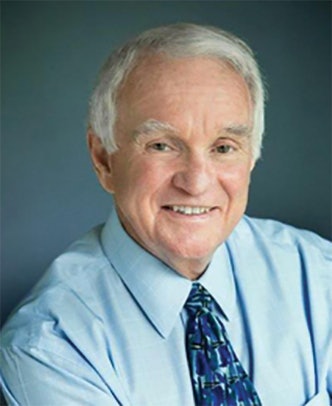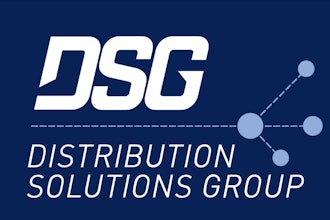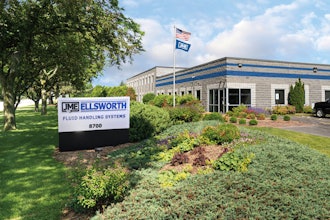
John Salvadore, the managing partner of GRN Coastal, a leading recruitment firm specializing in the distribution/manufacturing sectors, has placed hundreds of clients over the years but rarely has he seen the rise in the number of open positions.
“We’re busier now than we’ve ever been,” he says. “We’re carrying 30 to 40 jobs that we’re trying to fill and most of them are in distribution.”
Salvadore is seeing the difficulty faced by so many employers, both in small businesses and large ones: finding good, qualified workers in light of one of the worst labor shortages the country has ever seen, a problem partially caused by the “Great Resignation.”
The problem is acute and is not getting better, according to distribution experts.
In an interview with The CEO magazine, White Cap CEO John Stegeman says "If you're operating in North America today, I think one of the biggest challenges a distributor has -- and it doesn't matter what kind of distribution you're in — is a war for talent, especially in light of a strong virtual labor environment.”
The “Great Resignation” in the U.S. continues to pick up steam and continues to affect all employers, including distributor management.
To put the number of resignations in perspective, some 4.3 million people quit their jobs this past December, according to the U.S. Bureau of Labor Statistics. And companies, including distributors, report a record-breaking high of 10.9 million vacant positions.
Employees leaving doesn’t just mean a job is open but the company is faced with lower productivity, a decline in morale and the remaining colleagues struggling with increased workloads.
In reality, resignations of workers started increasing long before the pandemic hit. Several pre-pandemic surveys pointed out that many workers were actively looking for new jobs because they felt unappreciated with little opportunity for advancement and no flexibility in their work hours or the ability to work remotely.
There are other reasons of course. Today we’re seeing older workers who have seen huge gains in their 401k numbers and now realize they can afford to retire. In just the past few months, we’re aware of two distributors who lost long-time employees who were only in their early 60s.
In addition, a quarter of U.S. workers are considering a job change or retirement in the next 12 to 18 months, pointing to further churn in the labor market.
To show the surge in retirement savings, you only need to look at figures from Fidelity Investments. The number of 401(k) and individual retirement accounts holding at least $1 million soared to a record 754,000 in the second quarter of 2021, Fidelity said in an August report, up 75 percent from the year-ago level.
While that means distributors are losing the experience and expertise of these older workers, it could create an opportunity if more employers offered part-time work and flexible hours for these newly-retired employees to help with the worker shortage.
Salvadore also pointed out that many staff members who have been working remotely are more satisfied with their newly discovered work/life balance.
“People have gotten used to a certain lifestyle. They might be able to drop their kids off at school, for example. They’ve grown accustomed to that. And now some workers may have to go back in the office and it sort of forces these people to find new job opportunities. This is something I hear everyday,” Salvadore says.
He adds: “Money is important, of course, but people just want to be happy.”
And work happiness can’t be over-emphasized.
An extensive study into happiness and productivity has found that workers are 13 percent more productive when happy. The research was conducted in British telecom firms over a six-month period.
Various surveys also support Salvadore’s emphasis on distributors becoming more flexible with their employees.
A May 2021 survey found that 54 percent of employees surveyed from around the world would consider leaving their jobs if they were not afforded some form of flexibility in where and when they work.
And the costs of finding and training a new employee can be high.
It has been estimated that the cost to the employer of replacing a departing employee is, on average, 122 percent of that employee’s annual salary in terms of finding and training a replacement.
It is particularly interesting to note the questions that prospective employees ask recruiters or HR management when seeking a new position.
“We’re seeing a lot of questions about a company’s size, “ Salvadore explains. “The reason that they’re asking that is because if an employer has over 100 employees, everyone working there may have to be vaccinated. And these people are asking about the company’s vaccination policy.”
Prospective employees used to ask the standard questions about 401ks, vacation or sick time but now they‘re focused on the medical plan itself and what their out of pocket expenses would be because of COVID.
COVID has changed the workplace more than anyone could have anticipated.
For example, one prospective client told Salvadore that he previously had COVID and didn’t want to be vaccinated because he had developed antibodies from the virus. But his employer made him swab every day and now the employee wants a new job with a different vaccination policy.
What is surprising to employment experts is that many people who resign don’t even have new positions. And those left behind to pick up the load are feeling overwhelmed.
One study showed that 40 percent of those employees resigning were leaving their companies because of burnout. A Gallup study of nearly 7,500 full-time employees found that 23 percent of employees feel burned out at work very often or always. Another 44 percent say they sometimes feel this way.
What are other reasons employees are leaving? Salvadore says companies that change their comp plans are “going to be in real trouble”
“Salespeople, in particular, are fed up. They want more consistency in their lives and we’re seeing more salespeople seek guaranteed pay and are willing to forego large commissions,” he says.
He adds many salespeople were burned out because of COVID with less commissions and now they’re looking for a little “bump” in salary that is more guaranteed, meaning less reliance on commissions.
What should employers be doing to retain employees?
First, managers need to be flexible and re-focus on remote working and be open to new ideas instead of enforcing regular, rigid hours.
“The traditional distributor who demands that people be in their offices 5 days a week at specific times like 9 to 5 are hurting themselves from attracting and gaining top talent,” Salvadore emphasizes. “These people can easily go down the street and get a job at a more flexible distributor.”
Remote working, for example, is a policy that many workers have grown accustomed to and many of these employees say if it not offered in the future, they will resign.
Studies back up the results of employees working remotely. Several reports over the past few months show productivity while working remotely from home is better than working in an office setting. On average, those who work from home spend 10 minutes less a day being unproductive, work one more day a week, and are 47 percent more productive. In a work week, those who work at home are more consistent, work more hours and get more done.
 Jack Keough
Jack Keough
With all the changes taking place in the workplace, the days of top down management may be ending. And that means there will be more major changes in the workplace forcing employers to adapt and meet new challenges in recruiting, hiring and retaining employees.
Jack Keough is president of Keough Business Communications. He was editor of Industrial Distribution for 26 years. You can reach him at [email protected].























